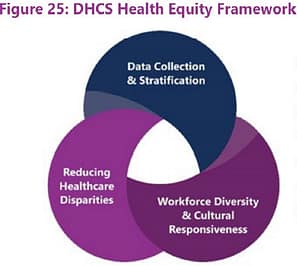By Robert L. Moore, MD, MPH, MBA, Chief Medical Officer
“Mistakes are a fact of life: It is the response to the error that counts.”
-Nikki Giovanni, poet
Many years ago, a Primary Care Provider (PCP) unintentionally placed an intrauterine device (IUD) into a women who turned out to be pregnant. The pre-procedure protocol was to time the insertion of the IUD to be a few days after completing menstruation, and checking a pregnancy test. In this case, the medical assistant did not conduct the pregnancy test and the provider did not confirm a negative test before the procedure. The patient later discovered she was pregnant and had a miscarriage.
The PCP instituted a number of process changes. They developed a standardized form which listed the pregnancy test result prominently so the medical assistant is reminded to do the test and the provider could readily see it. A check box, requiring the clinician to confirm that the pregnancy test was negative, was added to the progress note template.
A Partnership HealthPlan (PHC) nurse noted this adverse outcome referred it to the PHC quality team for investigation.
Like many of your organizations, PHC has a peer-review process where we review referred cases in which a potential quality issue is identified. PHC doctors, nurses, and pharmacists review patient care while conducting care coordination or utilization management activities, the results of which could generate complaints from our members (your patients).
PHC typically gathers documents (medical records, grievances etc.) to see if the initial concern is confirmed. If the concern for a quality-of-care issue is not resolved by this documentation, we will typically send a letter to the clinician whose care we are concerned about, asking them to review the case and respond to our concerns.
Clinicians may respond in one of these ways.
- Respond giving some additional information or context which makes clear that there were no quality-of-care issues after all.
- No response, in spite of multiple attempts. We are then forced to make a finding based on the information we have. These clinicians may be afraid of liability or feel like they are too busy to get around to responding; hard to know.
- Respond defensively, saying they did everything right, often blaming the patient in some direct or indirect way for the outcome.
- Respond reflectively and humbly, noting the complexity of the case but clearly identifying opportunities for them to improve practices, systems of care, or thought processes they will apply for future cases.
We are all human and make mistakes. When clinicians respond with reflection and humility, looking for ways to learn and improve ourselves, we are making ourselves better diagnosticians and clinical decision makers. This approach is a reflection of a “growth mindset”.
On the other hand, if we look around for excuses and others to blame for poor outcomes – unwilling to look in the mirror at how our biases and thought processes played a role in our own poor choices – we are not learning, and we are likely to make similar errors in judgment in the future. This approach is a reflection of a “fixed mindset”.
Psychologist Carol Dweck’s 2006 book Mindset: The New Psychology of Success suggests that our world view and behavior is influenced by these two mindsets. While our mindset is not easily changed, becoming aware of this dichotomy may help some people consciously move themselves from a fixed mindset in the direction of more growth.
When confronted with an complex adverse outcome with many causes, we should take the time and effort to look at how our decisions or systems could have been different, actively looking for opportunities to change systems and cognitive processes to help future patients.
When the PHC peer-review team receives responses indicating a growth mindset –acknowledging errors and explicitly listing changes for better care in the future – we are reassured these clinicians will learn and improve throughout their careers. When the peer-review team receives no response or a response showing no introspection and searching for others to blame, we are more concerned, and more likely to escalate to appropriate oversight organizations.
As medical leaders within your organization, you play a key role in this process. If you have been a medical leader long enough, you have had to confront the issue of clinicians without a growth mindset. To enable you to conduct your own investigations and assess competency concerns, PHC will ensure the medical director overseeing a clinician is aware of potential quality issues. We hope you can mentor and counsel your clinicians, using potential quality investigations as opportunities for them to grow and learn.
One approach to building a culture of growth is the “Just Culture” approach pioneered in patient safety work. Ensure that peer review and mentoring activities are supportive and don’t shame individual providers. This helps model the a learning approach to feedback with a growth mindset.

